Frequently Asked Questions about our platform, shipper registration, truckers, payments,
invoices, tracking and more, all answered below.
Mavyn is a technology-driven logistics company that focuses on truckload (more than 800 km) transportation in India. It is backed by Chetak Group, who are pioneered in logistics industry in India. Mavyn is the first internet company in India to apply Artificial Intelligence (AI) and big data in the truckload logistics sector.
|
||||||||||||||||||||||||||||||||||||||
Don’t see your Vehicle type listed? We are rapidly expanding and will be adding to this list as we grow. You can still register with Mavyn and once we have work for your Vehicle, we’ll let you know
| Who | When | Part | Form |
|---|---|---|---|
| Every Registered person under GST | Before movement of goods | Fill Part A | Form GST EWB-01 |
| Registered person is consignor or consignee (mode of transport may be owned or hired) OR is recipient of goods | Before movement of goods | Fill Part B | Form GST EWB-01 |
| Registered person is consignor or consignee and goods are handed over to transporter of goods | Before movement of goods | Fill Part B | The registered person shall furnish the information relating to the transporter in Part B of FORM GST EWB-01 |
| Transporter of goods | Before movement of goods | Generate e-way bill on basis of information shared by the registered person in Part A of FORM GST EWB-01 | |
| An unregistered person under GST and recipient is registered | Compliance to be done by Recipient as if he is the Supplier. | Canada | Canada |
| Magazzini Alimentari Riuniti | Giovanni Rovelli | 1. If the goods are transported for a distance of ten kilometers or less, within the same State/Union territory from the place of business of the consignor to the place of business of the transporter for further transportation, the supplier or the | |
| transporter may not furnish the details of conveyance in Part B of FORM GST EWB-01. | |||
| 2. If supply is made by air, ship or railways, then the information in Part A of FORM GST EWB-01 has to be filled in by the consignor or the recipient |
| Distance | Validity of EWB |
|---|---|
| Less Than 100 Kms | 1 Day |
| For every additional 100 Kms or part thereof | additional 1 Day |
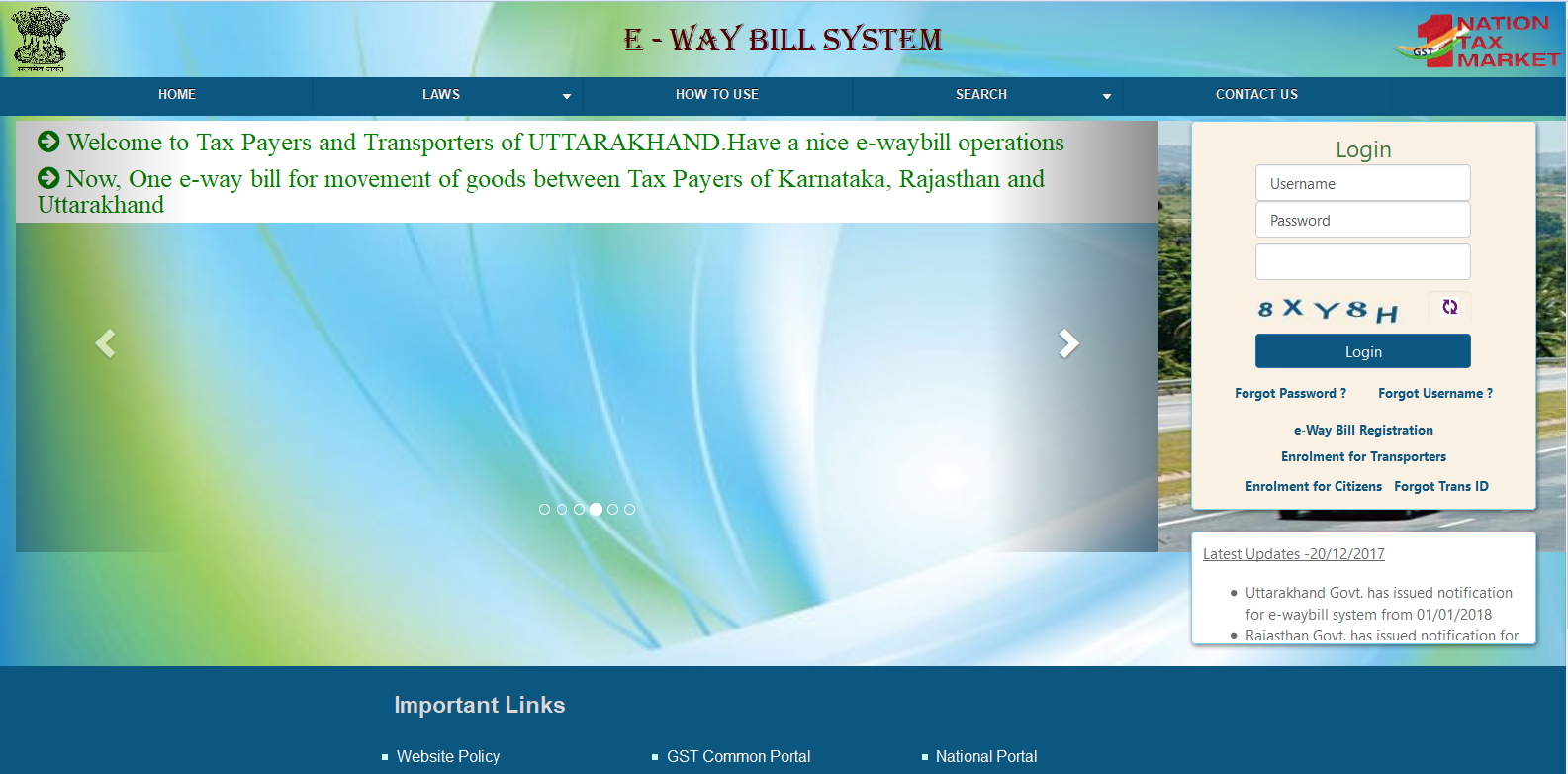
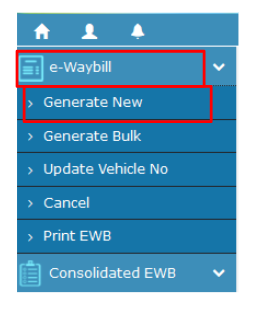






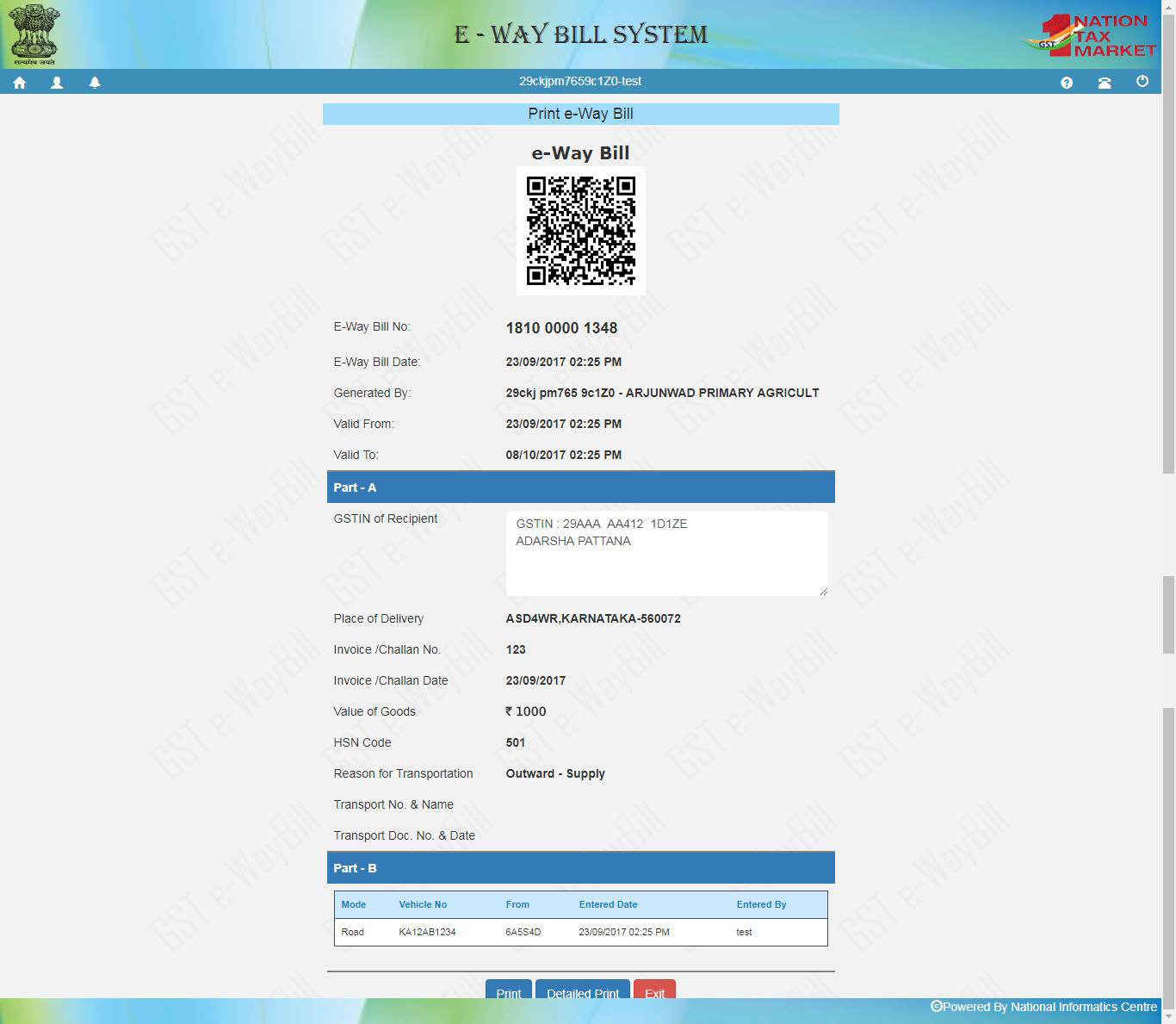
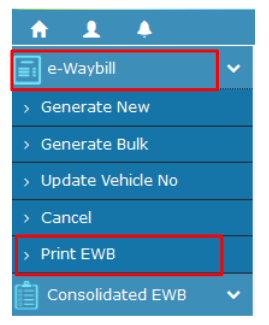

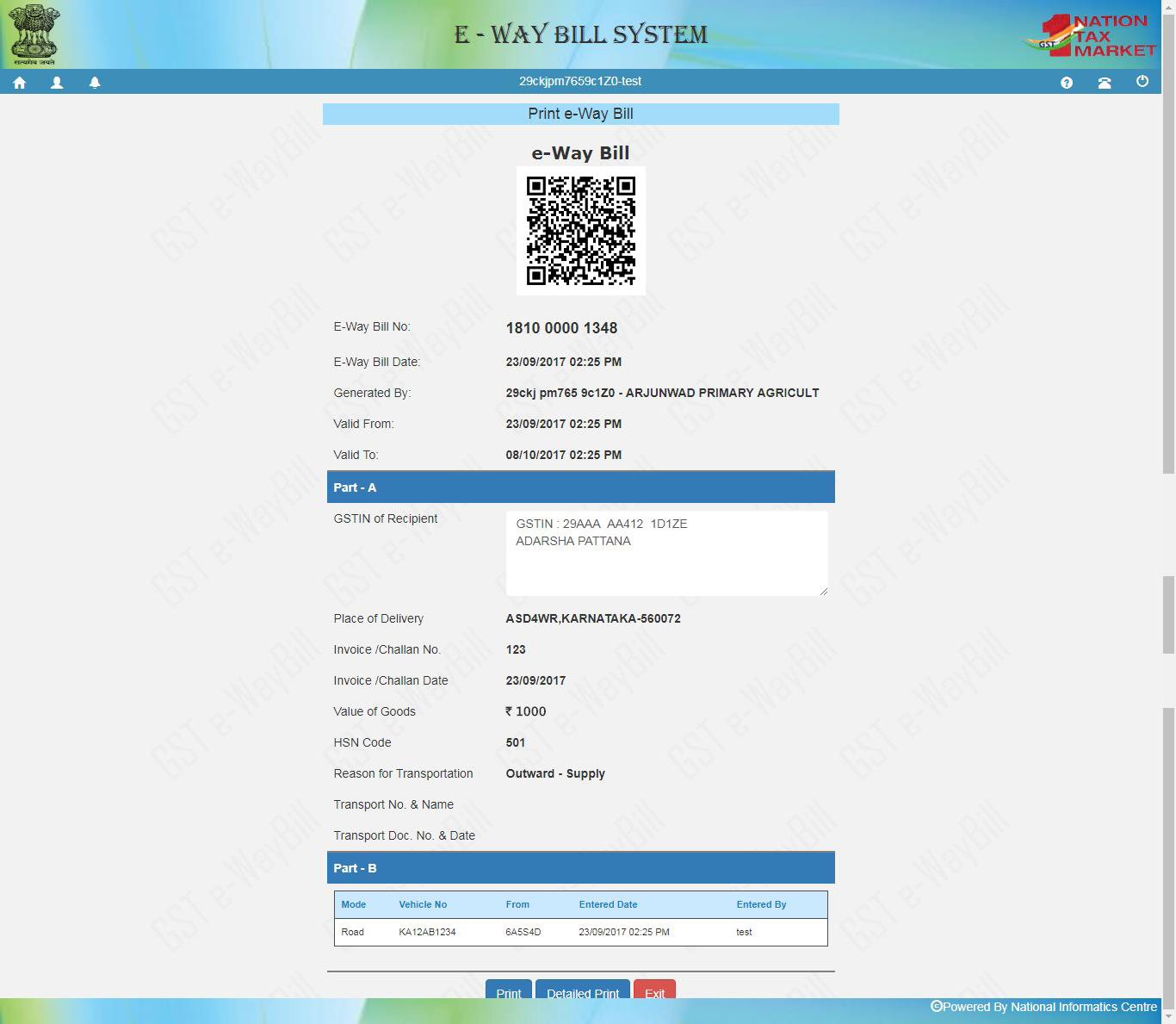
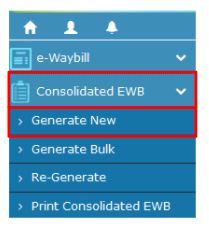 Step 3:
The following details are required to be entered in this step:1. Select ‘Mode’ of transport- Rail/Road/Air/Ship
2. Select ‘From State’ from the drop down3. In the ‘Vehicle Starts From, field enter the location from where the goods are being transported.4. Enter ‘Vehicle No.’5. Add the EWB no. (rest of the fields are auto-populated based on this)Enter the details and Click on ‘Submit’
Step 3:
The following details are required to be entered in this step:1. Select ‘Mode’ of transport- Rail/Road/Air/Ship
2. Select ‘From State’ from the drop down3. In the ‘Vehicle Starts From, field enter the location from where the goods are being transported.4. Enter ‘Vehicle No.’5. Add the EWB no. (rest of the fields are auto-populated based on this)Enter the details and Click on ‘Submit’
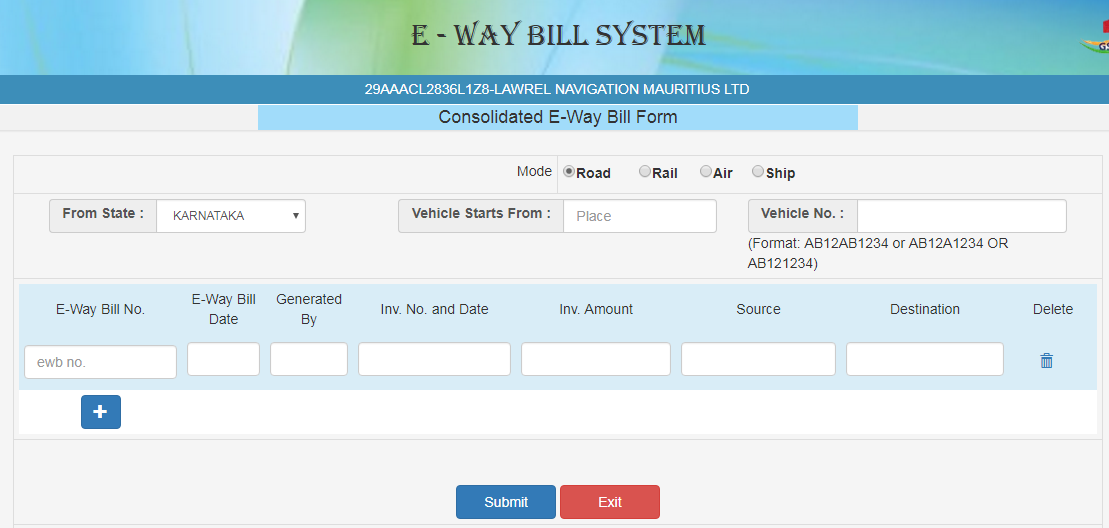 On submitting, following screen appears:
On submitting, following screen appears:
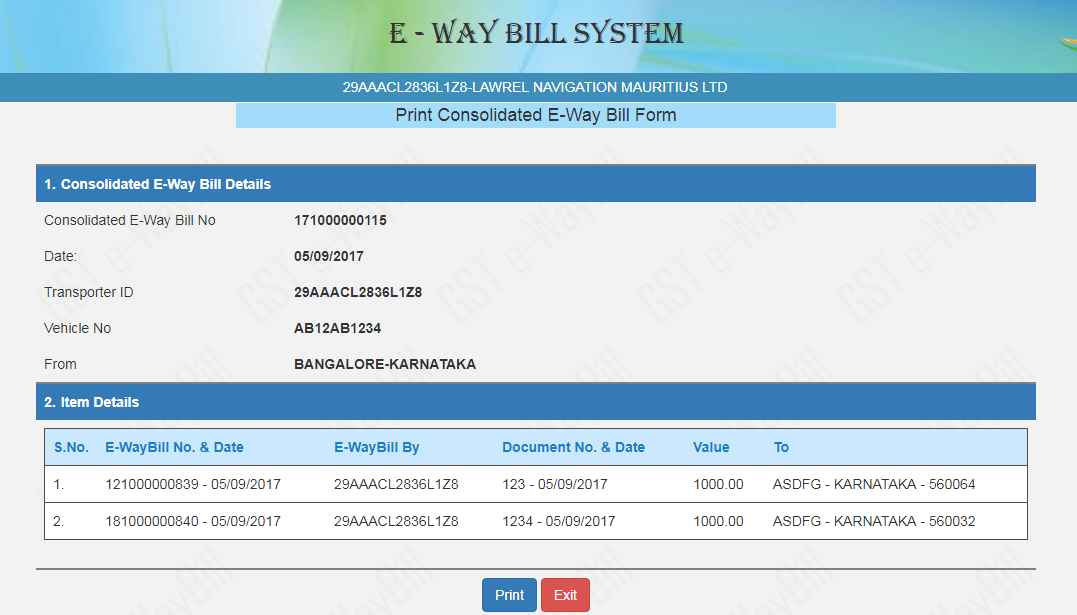 E-way bill in Form EWB-02 with a unique 12 digit number is generated.Print and carry this for transporting the goods in the selected mode of transport and the selected conveyance.You can print the Consolidated EWBs as follows:
Step-1: Click on ‘Print EWB’ sub-option under ‘e-Waybill’ option or ‘Consolidated EWB’ option
E-way bill in Form EWB-02 with a unique 12 digit number is generated.Print and carry this for transporting the goods in the selected mode of transport and the selected conveyance.You can print the Consolidated EWBs as follows:
Step-1: Click on ‘Print EWB’ sub-option under ‘e-Waybill’ option or ‘Consolidated EWB’ option
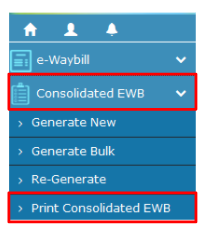

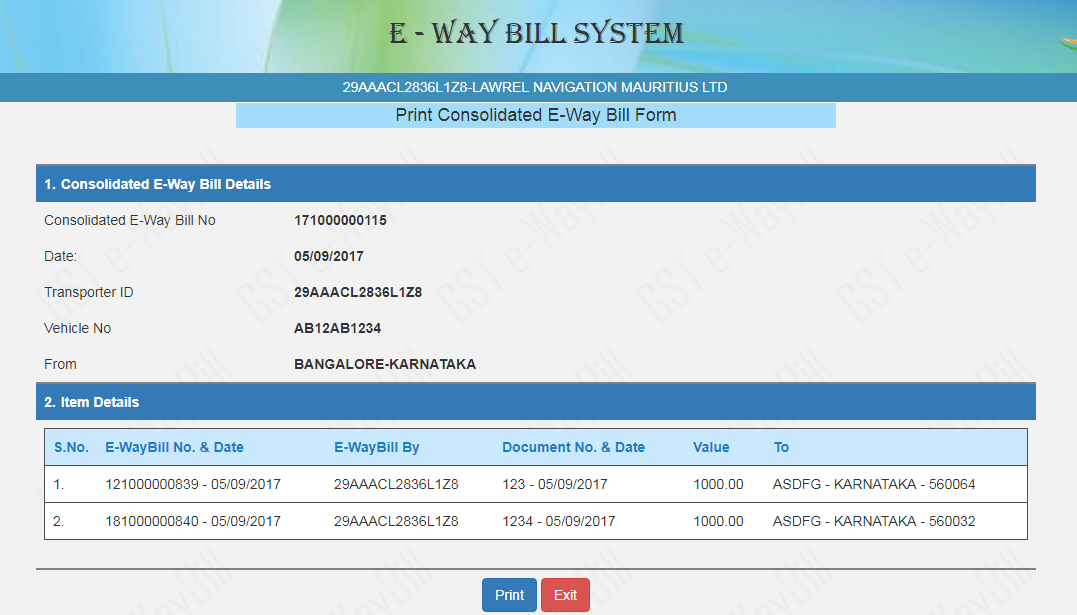
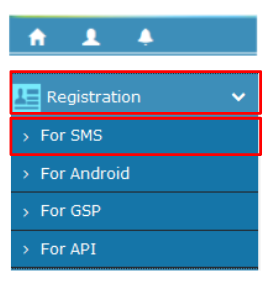
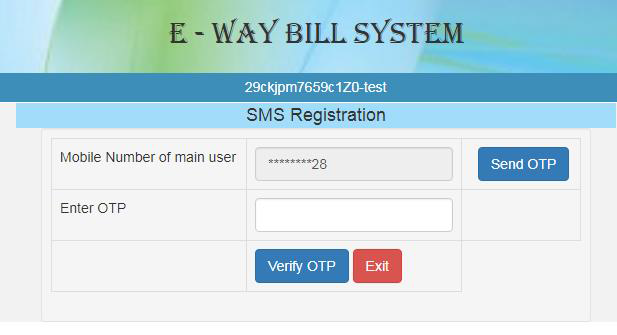
Logistics coordinates the movement and storage of resources such as goods, equipment and inventory. For manufacturers, logistics starts with the incoming supply of raw materials and carries through to the delivery of finished products to customers.
For example, a logistics department would receive supplies, give components to a production line, move finished goods to a distribution center, manage inventory and ship products to a customer.
Logistics teams are responsible for making sure each of these steps run smoothly, including purchasing, accepting inbound delivery, storage, packaging, inventory management, shipping, outbound transportation and delivery. Choreographing these processes gets complicated when volume grows and there are multiple products to manage. Companies that use several distribution channels and operate facilities in different locations face another layer of complexity.
Inbound vs. Outbound Logistics
|
||||||||||||||||||||||||||
Inbound logistics is the way materials and other goods are brought into a company. This process includes the steps to order, receive, store, transport and manage incoming supplies. Inbound logistics focuses on the supply part of the supply-demand equation.
Inbound Logistics Activities
The primary challenges of inbound logistics are high costs, uncertain delivery dates and unpredictable lead times. These make it hard for businesses to maintain ideal inventory levels and improve warehouse efficiency and productivity.
Here are some specific inbound logistics challenges in more detail:
Outbound logistics focuses on the demand side of the supply-demand equation. The process involves storing and moving goods to the customer or end user. The steps include order fulfilment, packing, shipping, delivery and customer service related to delivery.
Outbound Logistics Activities
Warehouse and Storage Management : A company keeps a certain quantity of goods on hand to meet demand. Outbound logistics processes store these goods securely in the right conditions and organize them. Inbound and outbound logistics overlap in warehouse management. But outbound logistics deals with outgoing finished products. For companies that sell finished products they receive from suppliers, inbound logistics concentrates on product acquisition and outbound logistics fulfills orders sent straight to customers and distributes the products to retail outlets.
Inventory Management : Software often plays a central role in inventory management, a process that determines the best place to store goods in the warehouse for fast order fulfillment and the order picking and packing operation. Inventory management goals include inventory and order accuracy as well as maintaining product quality by preventing damage, theft, obsolescence or spoilage.
Transportation : The modes and methods of shipping products vary depending on the type of goods. For example, huge items like heavy machinery may ship in small order quantities by truck. Perishable items like fresh flowers may need to be transported by plane in refrigerated containers.
Delivery : On-time delivery is critical to success. Moreover, the customer’s order must have the correct items and quantities, and the package can’t get lost or damaged in transit. Outbound logistics takes responsibility for this step.
Distribution Channels : The ways your product reaches the customer, called distribution channels, affect how you organize outbound logistics. Distribution channels can be broadly categorized into direct (when you sell directly to your customers) and indirect (when you sell through an intermediary such as a wholesaler or retailer). There are many distribution methods, including direct to consumer, value-added resellers, dealer networks, dual-distribution, omnichannel and drop shipping. When choosing distribution channels, consider logistics complexity, cost, speed, quality, customer satisfaction and control
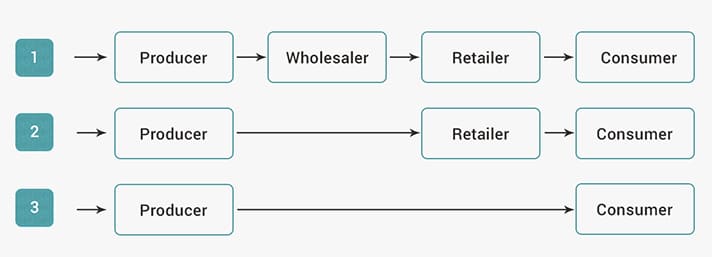
Last-mile Delivery : The final step in an order’s journey covers the last shipping leg and delivery. The last mile is usually the most costly and inefficient part of delivery. The term comes from the early days of telephone service, when wiring homes to the mainline was slow and expensive. Last-mile logistics includes services such as home grocery delivery from a local store and package delivery by a common carrier. Before the last mile, shippers can handle lots of orders at the same time in the same way (for example, they can load dozens of orders going to the same city in one truck). But in the last mile, each delivery requires individual handling because it goes to a single address. Deliveries to addresses get spread over a suburban region or packed within a gridlocked city center where parking is difficult—last-mile services account for 41% of overall supply chain costs.
Delivery Optimization : Optimizing delivery involves not only reducing costs but meeting ever-increasing customer expectations for speed and visibility. Often, these two things go hand-in-hand. Route planning software groups orders more efficiently for delivery, sorts packages by route, plots the best course with an eye to traffic, fuel consumption and other variables, and assigns routes to drivers.
Outbound logistics challenges can hurt profits and customer satisfaction. Inventory and shipping costs can rise quickly, while incorrect or late orders will drive customers away.
Coordinating Operations : Outbound logistics teams must monitor production, storage and distribution—coordinating the optimal movement of goods is no small task. If production rises, the logistics team needs to free up more warehouse space, and as production increases to meet customer demand, shipping and delivery need to scale. Software and automation can help close the information loop by connecting production to storage capacity and demand.
Achieving the Seven Rs : Coined by John J. Coyle, professor emeritus of logistics and supply chain management at Penn State University, the seven Rs are: getting the right product, to the right customer, in the right quantity, in the right condition, at the right place, the right time and at the right cost. Consistently hitting these targets requires an integrated management process that uses data to assess performance, identify areas of weakness, and track and foster continuous improvement.
Inventory Costs : Keeping enough inventory to meet fluctuating customer demand without creating unnecessary holding costs requires careful planning. Keeping a close eye on inventory planning metrics such as sell-through rate and inventory turnover and tracking numbers like safety stock and shifts in demand is important. See the comprehensive list of inventory management metrics for a list of key formulas.
Transportation Costs : A major cost for outbound logistics is transportation. Companies can control costs by analysing past spending to spot inefficiencies. Try exploring different strategies such as dynamic pricing, volume discounts with carriers, opening up bidding for your products/services and looking at freight marketplaces.
Rising Customer Expectations : Consumer demands continue to climb, and free, fast delivery is now the expectation. Same-day and even two-hour delivery are the norms in some regions and industries. Customers want real-time visibility into the status of their orders and to be able to track them on a map. To meet this trend, logistics teams need to understand the role of delivery as a competitive differentiator and the lasting effect of a poor customer delivery experience.
Optimizing inbound logistics means making the operation faster, leaner, more cost-efficient and more agile. Assess every process, identify strengths and weaknesses, and then make improvements.
1. Model your current process and measure performance.
Look for inefficiencies related to cost, waste, quality loss, duplicate work, information gaps and delays. The presence of invisible or intangible costs in inbound logistics, such as inventory carrying costs and the impact of poor customer service, can complicate matters. Compare your operation to industry benchmarks and competitors.
2. Analyze your choices.
Understand how your decisions affect cost and efficiency. For example, if the procurement department makes purchases in large quantities to receive volume discounts, are those savings offset by the expense of holding and managing excess inventory? The major cost drivers for inbound logistics are purchasing, supplier management, transportation, receiving, warehousing, material handling and inventory management.
3. Develop strategies to address inefficiencies system-wide.
Account for trade-offs among activities. Investing in automation and analytics will enable more data-driven decision-making.
Some of the most widely recommended actions to optimize inbound logistics include:
1. Build strong relationships with suppliers : Strong supplier partnerships can yield benefits such as better terms, reduced lead time, cost savings and a sense of security during market fluctuations.
Prioritizing this relationship helps your supplier understand your business better. A supplier compliance plan explains your requirements and penalties for mistakes such as late delivery or not following route guidelines. Such a program can reduce freight and warehouse costs, improve speed and accuracy, and increase customer satisfaction.
2. Use a transportation management system (TMS) : This software automates, manages and optimizes freight operations. A TMS compares shipping quotes and service levels among carriers, schedules the shipment and tracks it through delivery. These details help a company reduce costs, increase efficiency and gain full visibility into its supply chain.
3. Use a warehouse management system (WMS) : WMS software optimizes warehouse operations by streamlining receiving, put away, inventory management, picking and more.
4. Combine deliveries : Less-than-truckload (LTL) shipments have higher shipping costs and longer receiving times. Sometimes there are barriers to consolidating shipments, such as different handling needs (some goods need refrigeration, for example). If a business struggles to make full truckloads, a third-party logistics provider (3PL) can combine its partial loads with those of other customers.
Logistics is just one piece of supply chain management. Supply chain management manages all the links among suppliers, producers, distributors and customers.
Other elements of supply chain management include manufacturing and delivery-related customer service. Logistics helps synchronize the supply chain by controlling the flow of goods from the point of origin to the point of consumption. Participants in the supply chain, like suppliers and buyers, find partnerships helpful. Two firms work together for their mutual benefit. These partnerships are often open-ended, unlike strategic alliances or project partnerships.
Supply chain partnerships require:
The most important partnerships include suppliers and vendors on the supply side. On the demand side, the critical ties are among logistics providers, retailers, wholesalers, distributors and end customers.
Suppliers may collaborate closely with important customers on product formulation, product size, product mix, SKUs, inventory levels, supply forecasts, risk management, cost control, waste reduction and ordering systems. The customer may want to work together with logistics providers on pacing, packaging, scheduling and route efficiency.
Supply chain management looks collectively at multiple business activities to achieve a competitive advantage. Logistics focuses on the flow of goods to meet customer needs.
Role of Logistics in Purchasing and Receiving Purchasing/Selling Receiving/Shipping
Diagram showing the relationship between purchasing and selling and receiving and shipping:

Inbound and outbound logistics break down into many specific steps. Together, the steps help ensure the smooth movement of goods and materials into and out of a business.


Fuel price hike could see 50,000 small truckers going out of business...

India's truckers in crisis: police checks, no food and fears of coron...

Logistics and Warehousing industry is headed into right direction, say...

Mavyn appoints Arun Arora as their Director, Strategy and Communicatio...

Mavyn appoints Arun Arora as director, strategy and communications - E...

Our founder Mr. Sachin Haritash, is one of the founding members of Nat...

Sachin Haritash is one of the panelist at 'Emerging Trends in Supply C...